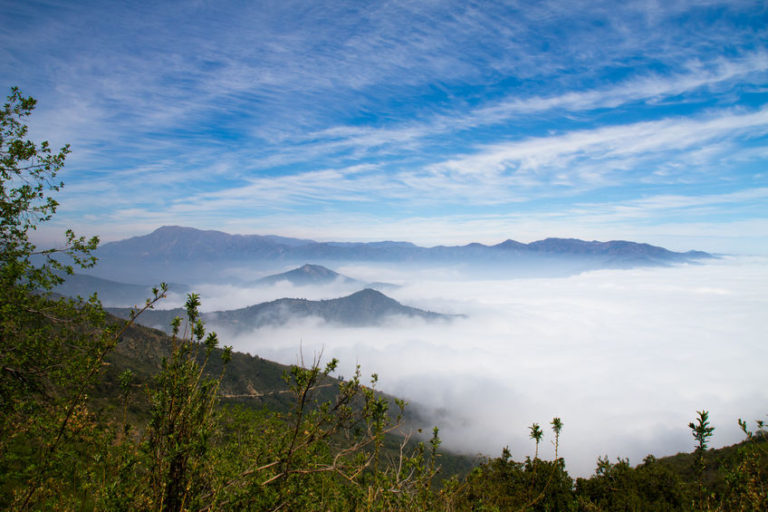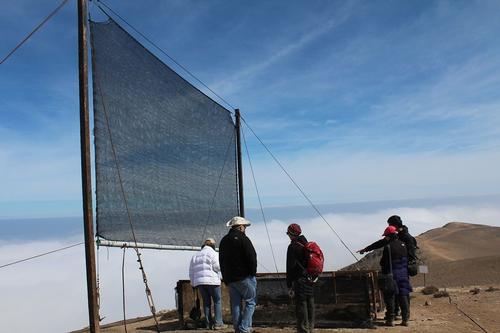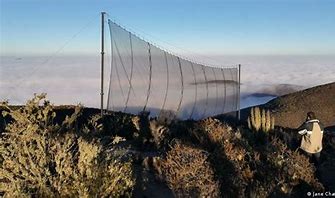Such a discovery has made the inhabitants of desert stretches of Chile, smile.
This way, their clamour for water and incessant thirst could be suppressed in such areas, globally too.
Credit for such inquisitive thoughts goes to minds that got stunned by such mass fog bulging with water within.
Science News India Today
They set out to study its potential and possible harvesting, holding their desert stretch of Alto Hospicio, tucked in the north of the country, in the backdrop.
Alarming is the fact, that the area receives meagre rainfall at an annual average of just 5mm.
Dr Virginia Carter Gamberini, who sits in the chair of senior researcher from Universidad Mayor confirms, “Like a lot of cities, Alto Hospicio has its social problems.”
She further added, “There is a lot of poverty,” which results in people not having access to clean drinking water.
Many residents of the poorest neighbourhoods in the city depend on truck deliveries of drinking water.
However, according to academics, fog clouds that frequently form over the mountain city represent an untapped source.
How is fog harvested? Science News Latest India Today
Capturing fog water is very simple – a mesh is stretched between poles, and when the moisture-laden clouds pass through that small mesh, droplets form.
After that, the water is directed into storage tanks and pipes.
For several decades, it has been employed on a modest scale, mostly in remote areas of South and Central America, where the proper fog conditions exist.
Morocco, on the border of the Sahara Desert, has one of the largest fog water harvesting systems. Environment news updates in India.
A “new era” of far larger-scale fog collecting, according to Dr Carter, would offer a more reliable and sustainable supply of water in urban areas where it is most required.
She and her colleagues conducted evaluations of the amount of water that fog harvesting may produce, combining the results with weather forecasts and studies of cloud formation in satellite imagery.
They concluded that the clouds that frequently form above the Pacific and blow across the coastal mountain city could offer a sustainable source of drinking water to the residents of Alto Hospicio’s slums.
We cover Climate change news in India.
Their research was reported in a Frontiers of Environmental Science publication.
Warm, humid air travels over cold water to create Alto Hospicio’s fog, which is subsequently blown over the mountains.
Dr Carter and her colleagues were able to identify regions where the highest amounts of water could be consistently extracted from the clouds because of the consistently foggy circumstances here.
Climate change news in India.

The researchers calculated the following aspects using a daily average water collection rate of 2.5 litres per square meter of mesh:
- The weekly 300,000 litres of water that are currently carried by truck to urban slums might be produced by 17,000 square meters of mesh
- The yearly requirement for watering the city’s green areas may be satisfied by 110 square meters.
- For soilless (hydroponic) farming, fog water could be utilized, producing 33-44lb (115-20 kg) of green vegetables every month.
One of the driest regions of the world, the Atacama Desert, borders Alto Hospicio.
Due to the region’s low to nonexistent precipitation, subterranean aquifers – rock layers with water-filled spaces – act as the primary supply of water for communities.
These aquifers were last replenished thousands of years ago.

Environment news updates in India at the click of a button.
According to the scientists, there is an urgent need for alternative sustainable sources of clean water due to the expanding urban population and the strain that mining and industry are placing on those water supplies.
Chile Is Darling: Environment News updates in India.
Chile is “very special” for its sea fog, according to Dr Gamberini, because we have the mountains and the ocean along the whole country.”
At the moment, her group is creating a “fog harvesting map” of the entire nation.
According to Dr. Carter, “water from the clouds” has the potential to “improve access to clean water while enhancing our cities’ resilience to climate change”.






